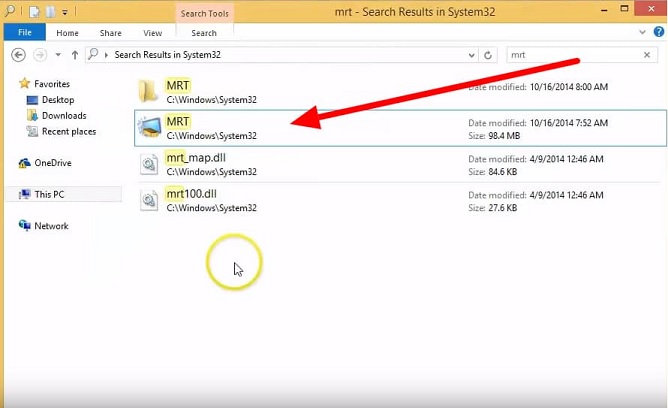MRT.exe is a legal Desktop software that stands for Malware Eliminating Tool. Because of the assets it consumes to execute various duties, this software would surge CPU as well as Memory use while it operates.
During 2005, Ms published the very 1st Ms Removal Utility for such Ms Windows operating system. There’s a few causes that might be causing the mrt.exe system to begin so much CPU. Mrt.exe (Vindictive Application Eradication Utility) is a Windows-specific remediation programme.
So, just when you look at mrt.exe functioning within Device Manager will not really automatically imply it’s a threat. So monthly, the Hazardous Program Elimination Toolkit is upgraded through Software Updates (in the Tue upgrade of each month). The above utility is planned to operate whenever one is modified, but it does not function once it has been upgraded.
What Is Mrt.Exe?
MRT is the abbreviation for Ms Removal Toolkit. The Desktop Dangerous Program Removal Toolkit is how Ms calls to that though. It’s a Ms computer program, as per File.net. This mrt.exe package is the primary component that the Ms Removal Toolkit uses to execute.
Despite the fact that it is not an essential Desktop function, File.net recommends that you can still delete it if it is giving customers trouble. That freeware programme, which was initially launched in 2005 for Ms Windows, is mostly used for virus monitoring.
Whenever you activate Desktop Automated Upgrades, the Ms Remediation Toolkit will indeed be acquired and executed upon that 2nd of every 30 days, as per File.net.
It’s described as a supplemental anti-malware programme; it can not be used in lieu of a specialised anti-malware programme such Norton as well as AVG, but it really is normally a little programme that wouldn’t offer consumers several difficulties.
How To Fix High CPU And Memory Usage by MRT.exe
The Hazardous Program Remover Utility is upgraded per 30 days when Ms distributes the Tue update; that would be the only occasion the utility executes, and you may notice Excessive Cpu Utilisation.

There was no need to be concerned if that’s the only occasion MRT.exe uses Cpu cycles. Nevertheless, when MRT.exe is consistently consuming Computational power and RAM, this is a red indicator.
Method 1: Delete Files Name Mrt.exe
C:Windowssystem32 is where you’ll find the authorized Wins Malicious Program Remover Toolkit. Whatever mrt.exe discovered elsewhere is a bug or spyware masquerading as the genuine mrt.exe. The very first action you really have to do is remove any mrt.exe programs that are not even located in C:Windowssystem32.
The procedures for identifying and eliminating harmful mrt.exe packages are just as follows:
Step 1: Push E while holding down the Wins button.
Step 2: Push F while holding the control button.
Step 3: Hit Enter after typing mrt.exe.
Step 4: Sit tight for Pc to begin looking for something like the document.
Step 5: Inside a perfect world, the outcomes of the search would just show a single mrt.exe. If you really want to view further, click rightly on the document and choose the Open folder from the menu. Choose Remove from the context menu when you click rightly on the item. Apart from the one under C:Windowssystem32, the process was repeated including all mrt.exe files (if you still have any).
Step 6: Help ensure the folder under C:Windowssystem32 isn’t deleted. The document’s address should indeed be mentioned underneath these (inside the search outcome ).
Step 7: If users didn’t extract the document, hold Control plus SHIFT plus Esc at the same time to launch the Task Manager. Identify your mrt.exe process and pick it. Choose the Finish Task option. Afterwards go through the procedures once more and attempt to erase the document.
After that, the excessive CPU consumption of mrt.exe should just not disturb anyone anymore. Nevertheless, to ensure that your controls are effective, experts suggest that users undertake the instructions in approach 2.
Remember: If users continue to receive the warning “MRT cannot be detected” upon uninstalling file mrt.exe, try the preceding.
Step 1: Obtain this same Autoruns from https://docs.microsoft.com/en-us/sysinternals/downloads/autoruns.
Step 2: Extract this zip archive (you’ll require WinRAR for it though) and execute mrt.exe after it’s retrieved.
Step 3: Search for such mrt.exe file inside the Logon code’s listing. Assuming visitors ca n’t reach mrt.exe within this category, go to the General section and search for it there.
Step 4: Choose Remove first from the context menu for mrt.exe within this listing. Any more requests should be confirmed.
Step 5: Upon initialization, users should’ve seen the mrt.exe-related notice once more.
Method 2: Scan Your Computer
If you’ve noticed as mrt.exe is always operating, one’s system has been most certainly contaminated. It is recommended that you analyze the system with something like a comprehensive cybersecurity tool although if users read the instructions in approach 1.
One may use whatever antispyware tool they choose, and if you’re not certain, Malwarebytes is a great option. Malwarebytes on Wins may be downloaded by clicking online. Launch Malwarebytes to examine any machine when it has been launched.
Also Read:
Conclusion
Needing just told, we assume readers already already have most of the necessary knowledge regarding MRT.exe and therefore could handle this nasty situation effectively. We believe you will find reading posts helpful, as we went out of our way to explain such technology to everyone.
Furthermore, while deactivating mrt.exe will not cause any problems, users shouldn’t be doing it until your System is experiencing a mrt.exe mistake.









































